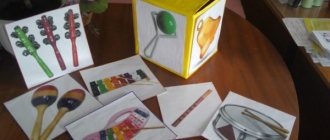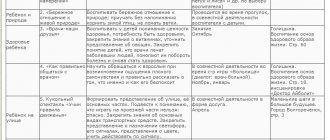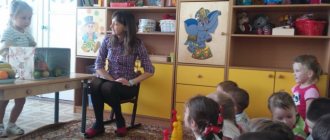etiquette in preschool education material on the topic
Story
It is traditionally accepted that the ancestor countries of etiquette are England and France, but the way of life in these countries at that time was such that in these cruel and rude conditions a person could not improve in his spiritual and moral endeavors. Certain moral rules and behavior arose around the 14th century in Italy, where already at that time the social essence and culture of the individual began to take one of the first places. In Russia, one of the first sets of rules of behavior is considered to be “domostroy” (16th century)[1].
A long time ago, people realized how important it is to maintain good, kind relationships with each other. It is difficult because each person thinks and acts differently, people have different views on life and different interests. In order not to offend anyone needlessly, in order to be pleasant and attractive, people came up with and established a special order of behavior that was convenient for everyone, and called it etiquette. ...
Etiquette is an integral part of the external culture of society; it is a kind of ritual, which is expressed in detailed rules of behavior that organize the life of society. The “Ethics Dictionary” defines this concept as follows: “Etiquette (French etiquette - label, label) is a set of rules of behavior relating to the external manifestation of attitude towards people (dealing with others, forms of address and greetings, behavior in public places, manners and clothing )" [Dictionary of Ethics 1981: 412]. Based on this definition, etiquette can be considered as a social concept, i.e. talk about etiquette as a historically established system of rules of social behavior adopted in traditional communication situations for a given ethnic group. To observe a certain order of behavior, to adhere to the existing system of permissions and prohibitions - this means accepting the existing system of values and thereby recognizing oneself as a member of this society.
Etiquette as a conventional ritual is a generally accepted system of certain rules of courtesy that regulate the characteristics of relationships between representatives of various segments of the population and social groups in accordance with their social status.
ETIQUETTE
FOR THE TEACHER
The position of a teacher requires special respect from parents, which plays an important role in raising children. Mutual respect between adults helps to develop a sensitive nature in a child.
Knowledge of etiquette rules is necessary for employees of all institutions, including kindergartens.
Code of Conduct in Children's Institutions
1. When the teacher enters the room, there is a mutual greeting between the teacher, children, and parents.
2. Exchange kind words with each other.
3. “Thank you”, “please”, “thank you” - polite words should be heard by the child.
4. When parents come to pick up their children, the behavior of adults must comply with ethical standards of mutual respect.
1. Appearance;
2. Manner of speaking;
3. Voice timbre;
4. Respectful attitude towards others;
5. No extraneous conversations in front of children;
6. Don’t forget to say polite words not only to children, but also to colleagues;
7. Be able to respond cordially and not speak in monosyllables: “Yes”, “No”...;
8. Before going to bed, adjust the blanket for each child and pat him on the head;
9. It is not recommended to speak indignantly to parents about the child’s bad behavior; it is necessary to take a benevolent part in identifying the reasons for such behavior.
10. Always keep yourself calm and restrained;
11. Listen to the complaints of indignant parents, without interrupting or making excuses, and when the outburst of emotions subsides, calmly and briefly express your opinion;
12. Every child should hear the calm, confident voice of the teacher in a conflict situation.
With this behavior of adults, the child imperceptibly begins to learn daily etiquette norms of behavior, the basis of which is friendly communication.
“The soul of a child is pure like white snow falling from the sky. And you need to write on it with a white stick, as clean as the stick itself. If you swipe with a black stick once, you will stain your whole soul. If you think about it, the white stick is folk pedagogy. And good customs, traditions, fairy tales, teachings... Everything that a person lives by. (Mikhail Yukhma)
Children are our pride. Everything about them is sweet and dear to us. But have we always thought that the attractiveness of our child is not only in the beauty of his appearance? The main thing is different - how does a growing child behave? How do you behave in public? What are his manners - facial expressions, gestures, movements, posture?
Have we done everything to raise morally healthy children? We asked ourselves this question and thought about this problem.
Etiquette, as an organic part of behavioral culture, is the order of behavior, and etiquette plays a very important role in the life of society.
A teacher for a preschooler is the first person after his parents to teach him the rules of life in society, broaden his horizons, and shape his interaction in human society. He bears a huge responsibility for the current and future life of the student, which requires high professionalism and enormous mental strength from the teacher.
V.A. Sukhomlinsky also said that “a person’s speech culture is a mirror of his spiritual culture.”
A child is a great observer and imitator - he notices any of his mother’s and father’s actions, hears all their words, adopts their judgments and behavior.
- Have a wonderful ideal, a high dream in your soul and strive for it. Be a better person, remembering that there is no limit to improvement.
- Always be in balance, holding back negative emotions.
- Deal with conflict situations with dignity and humor.
- Forgive, sympathize, empathize, be generous and forgiving.
- Always be friendly. Friendliness is the basis of your health.
- Create an oasis of kindness, love and beauty - in the soul, in the family, at work. Instill this in your children.
- Be kind and honest. Remember that the good you do will always return to you multiplied.
- Patience is a gift from Heaven. He who has patience will not stoop to irritation.
- There is always someone who needs your help, who has a harder time than you.
- The great mission of a woman is to bring love, beauty and harmony to the world. The team is also a family. Strengthen the peace of our family with good thoughts, kind words, and good deeds.
- Your explanations should be simple and understandable to children.
- When your child talks to you, listen carefully.
- Don't be stingy with praise.
- Watch your appearance and behavior.
- Your attitude towards work, people, objects is a role model.
- Love the child for who he is.
- Respect each child's individuality.
- Praise, encourage, encourage, creating a positive emotional atmosphere.
- Notice not the child’s shortcomings, but the dynamics of his development.
- Make parents your allies in education.
- Talk to your child in a caring, encouraging tone.
- Encourage the child's desire to ask questions.
- Shout and punish children.
- Expose children's misdeeds for everyone to see.
- Visit children in a bad mood.
- Discuss with parents the behavior of someone else's child.
- Leaving children alone.
- Humiliate a child.
- Threaten a child
1. Relationships between teachers are based on the principles of collegiality, partnership and respect. The teacher defends not only his own authority, but also the authority of his colleagues. He does not belittle his colleagues in the presence of students or others.
2. Teachers avoid unreasonable and scandalous conflicts in relationships. If disagreements arise, they strive to resolve them constructively.
3. Teachers avoid competition that interferes with their partnership in carrying out a common task. Teachers are united by mutual assistance, support, openness and trust.
4. The right and responsibility of the teacher is to evaluate the activities of colleagues and administration. Harassment of a teacher for criticism is strictly prohibited. Criticism should be between teachers, and not outside the preschool educational institution. It should be expressed face to face, not behind the scenes. There should be no place for gossip in educational institutions.
5. Criticism should be made public only in cases where there is absolutely no response to it.
6. Criticism directed at the work, decisions, views and actions of colleagues or administration should not humiliate the person being criticized. It should be reasonable, constructive, tactful, non-offensive, and friendly. The most important problems and decisions in pedagogical life are discussed and made in open pedagogical discussions.
7. Teachers do not cover up mistakes and misconduct.
each other.
1. The teacher himself chooses the appropriate style of communication with students, based on mutual respect.
2. First of all, the teacher must be demanding of himself. The teacher’s demands on the student are positive and well founded. A teacher should never lose a sense of proportion and self-control.
3. The teacher chooses methods of work that encourage the development of positive traits and relationships in his students: independence, self-control, self-education, desire to cooperate and help others.
4. When assessing the behavior and achievements of his students, the teacher strives to strengthen their self-esteem and self-confidence, show them opportunities for improvement, and increase learning motivation.
5. The teacher is impartial, equally friendly and supportive towards all his students. Having made evaluation decisions that unreasonably belittle a student, the teacher must try to immediately correct his mistake.
5. When assessing the achievements of students, the teacher strives for objectivity and fairness.
6. The teacher constantly takes care of the culture of his speech and communication. There are no curses, vulgarisms, rude or offensive phrases in his speech.
7. The teacher maintains discreteness. The teacher is prohibited from communicating to other persons information entrusted to him personally by the student, except in cases provided for by law.
8. The teacher does not abuse his official position. He cannot use his pupils or demand any services or favors from them.
Didactic game “I’ll make friends with cubes, I’ll learn etiquette”
Authors:
| Arisova Nafisa Talifovna, teacher of the highest category, | Poryadkova Oksana Petrovna, teacher of the first category. |
| MADO kindergarten No. 172 in Tyumen | |
Didactic game on etiquette
“I’ll make friends with cubes, learn etiquette”
TARGET:
— Learn to use polite words in situations accompanied by certain etiquette standards of communication.
— To promote the manifestation of a personal attitude towards compliance (or violation) of norms, that is, to encourage the child to strive for justice, to experience a feeling of rejection of unseemly situations and actions.
— Encourage friendly relationships between children (in particular, based on photographs of pupils on blocks), discussion and joint encouragement of worthy actions.
Guidelines
Children are offered 2 types of cubes, large ones - with photographs of children from everyday life in a kindergarten group, and small ones - with illustrative material reflecting situations of behavior in transport, at home, in kindergarten, theater, at a party, etc.
Under the guidance of an adult, children examine large cubes, discuss situations using the teacher's questions, and learn to make their own judgments and assessments. To do this, use chips with 2 types of emoticons: green - with a smile and red - with a sad expression.
The illustrative series changes as we study the rules of behavior in various situations: in a store, in a hospital, on the street, in kindergarten, at a party, etc. All situations are played out in role-playing games and photographed by the teacher.
The game is complicated by the fact that children must choose acceptable situations from a number of photographs (pasted on a yellow cube) and unacceptable ones (on a red cube).
Interacting with small cubes encourages children to act more independently. Children define and make judgments indirectly, based on situations not related to personal experience, which allows them to form a more conscious assimilation of moral norms and etiquette rules.
The help of the teacher will be required when complicating the game, determining situations not only how good and bad, but what emotion the child depicted in the picture experiences. You need to select a specific emotion for the situation on the cube, determine what the person depicted in the illustration is experiencing, name a specific emotion, paying attention to posture, gestures and facial expressions.
"Wall of Moods"
Goal: to enrich the emotional and sensory sphere of children by accumulating a complex of expressive means (facial expressions, intonation, gesture, posture).
Guidelines
To develop the emotional and sensory experience of children, the teacher will be helped by the “Wall of Moods”, which will teach them to feel and understand the emotional state of people (joy, anger, resentment, fear, surprise, fatigue, etc.).
Emotions are presented in the form of gnomes (the name of our group is “GNOMES”), and in the middle there is a mirror so that the child can play, live, and feel the emotion.
It is difficult for children to describe their own feelings and feel those of others, so children are given plot paintings where the situation and the emotions of the child depicted in the picture are interconnected. Then children will learn to identify basic emotions and find the relationship between human emotions and facial expressions. You also need to turn to the child’s life experience so that he can connect the experiences of another person and identify with his own in order to learn to empathize.
The teacher turns to the “Wall of Moods” in connection with various situations that arise in the children's group, helps children develop the social-emotional sphere.
Thus, the game will help children communicate kindly with peers, express their point of view, calmly express their feelings, and discuss various situations in the life of the children's group. With the help of an adult and independently, show a personal attitude, develop and adhere to certain norms and rules of behavior.
Dear teachers and parents - participants of the exhibition!
On June 2, 2020, a solemn ceremony of awarding the winners of the regional methodological exhibition “Modern educational environment of kindergarten and family” took place at the information and exhibition complex of the Tyumen Regional Duma. Details >>>
From June 8 to June 10, 2020, teachers from Tyumen received certificates of exhibition participants and multimedia albums with the full version of the exhibition at the Grant Center for the Development of Creativity for Children and Youth at the address: Profsoyuznaya St., 52. tel. for inquiries: 685-321,
June 9, 2020 Diplomas, certificates and gifts were sent to the winners and participants of the Exhibition of the south of the Tyumen region, Yamal-Nenets Autonomous Okrug and Khanty-Mansi Autonomous Okrug-Yugra by registered parcel post to the address of the preschool educational institution. Details >>>
Share










